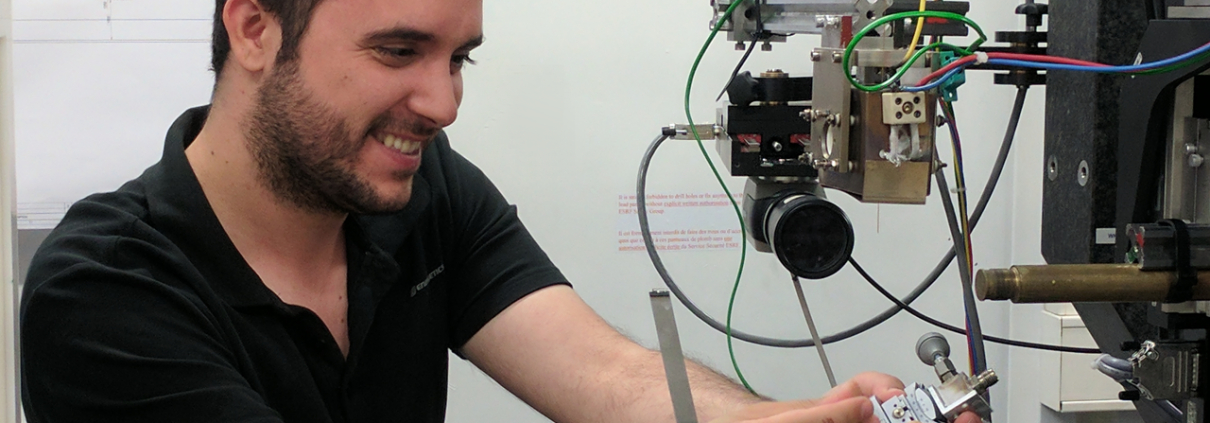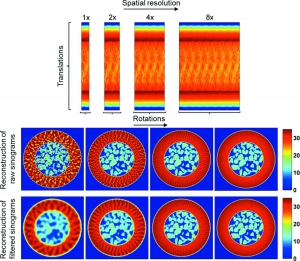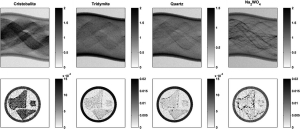
Finden research scientist Antony Vamvakeros working at ID15, ESRF to develop t he next generation X-ray imaging.
he next generation X-ray imaging.
Cutting Edge Methods
X-ray diffraction computed tomography (XRD-CT)
Examples of the algorithms to gain temporal resolution and improve quality of the reconstructed images developed by our team.
Interlaced XRD-CT

Continuous traverse IXRD-CT scan: the spatial resolution can be increased by combining different XRD-CT scans.
An X-ray diffraction computed tomography data-collection strategy that allows, post experiment, a choice between temporal and spatial resolution is reported. This strategy enables time-resolved studies on comparatively short timescales, or alternatively allows for improved spatial resolution if the system under study, or components within it, appear to be unchanging. The application of the method for studying an Mn–Na–W/SiO2 fixed-bed reactor in situ is demonstrated. Additionally, the opportunities to improve the data-collection strategy further, enabling post-collection tuning between statistical, temporal and spatial resolutions, are discussed. In principle, the interlaced scanning approach can also be applied to other pencil-beam tomographic techniques, like X-ray fluorescence computed tomography, X-ray absorption fine structure computed tomography, pair distribution function computed tomography and tomographic scanning transmission X-ray microscopy.
Removing multiple outliers and single-crystal artefacts

The sinograms of SiO2 cristobalite, SiO2 tridymite, SiO2 quartz and Na2WO4 and the corresponding reconstructed XRD-CT images are shown when the 3% alpha-trimmed-mean filter is used.
This paper reports a simple but effective filtering approach to deal with single-crystal artefacts in X-ray diffraction computed tomography (XRD-CT). In XRD-CT, large crystallites can produce spots on top of the powder diffraction rings, which, after azimuthal integration and tomographic reconstruction, lead to line/streak artefacts in the tomograms. In the simple approach presented here, the polar transform is taken of collected two-dimensional diffraction patterns followed by directional median/mean filtering prior to integration. Reconstruction of one-dimensional diffraction projection data sets treated in such a way leads to a very significant improvement in reconstructed image quality for systems that exhibit powder spottiness arising from large crystallites. This approach is not computationally heavy which is an important consideration with big data sets such as is the case with XRD-CT. The method should have application to two-dimensional X-ray diffraction data in general where such spottiness arises.
Read more about our team and further publications.
The research project receives funding from the European Community‘s Framework Programme for Research and Innovation Horizon 2020 (2014-2020) under grant agreement no. 679933.

